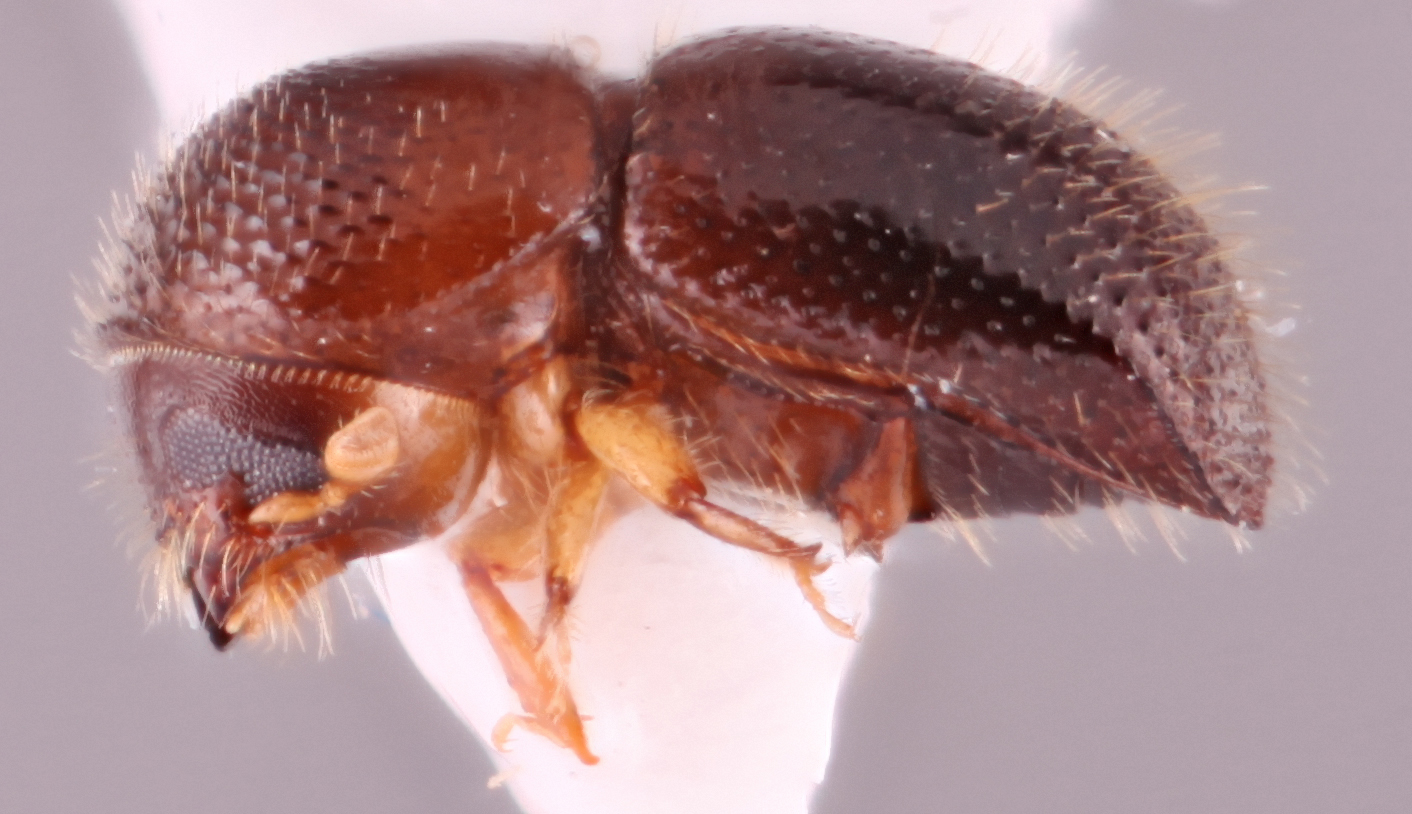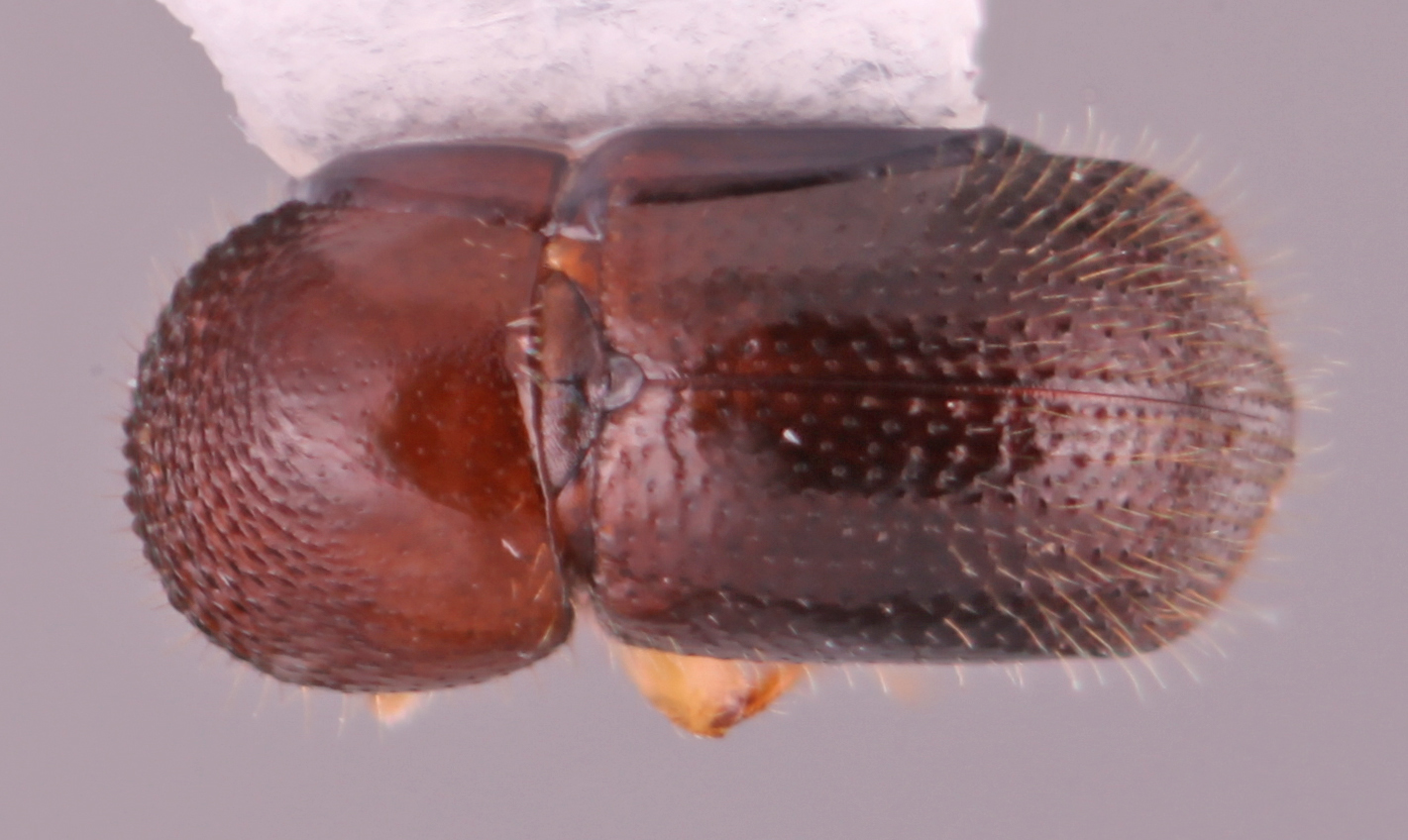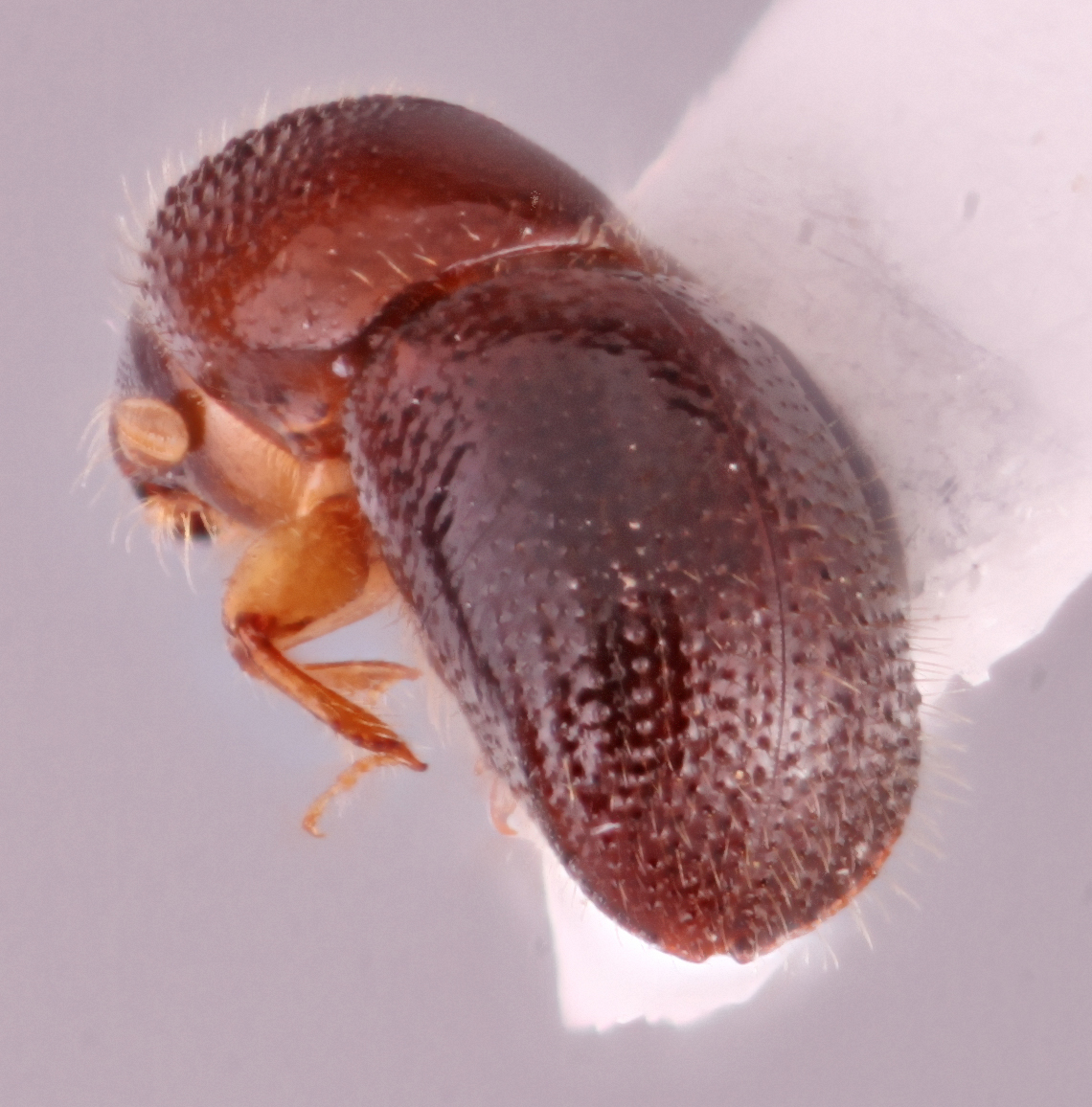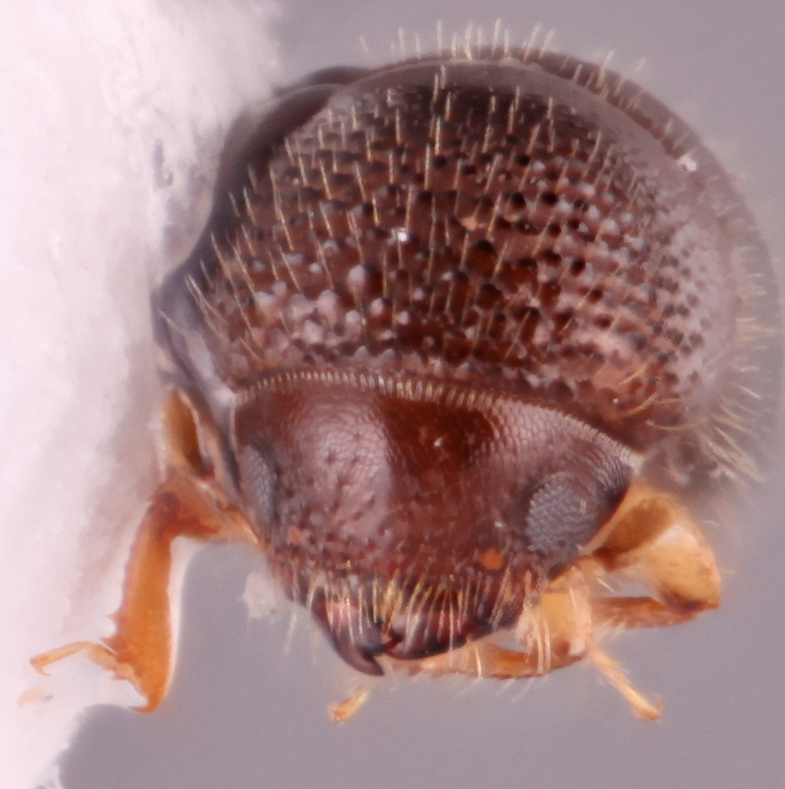Xylosandrus adherescens
|
Xylosandrus adherescens lateral; S.M. Smith |
|
Xylosandrus adherescens dorsal; S.M. Smith |
|
Xylosandrus adherescens declivity; S.M. Smith |
|
Xylosandrus adherescens frontal; S.M. Smith |
Taxonomic history
Xylosandrus adherescens Schedl, 1971b: 375.
Diagnosis
2.0 mm long (n = 3); 2.0 times as long as wide. This species can be distinguished by its small size; elytralelytral:
'pertaining to the elytra
discdisc:
the flat central upper surface of any body part (e.g. pronotum and elytra) flat, gradually curving toward declivitydeclivity:
flat, gradually curving toward declivitydeclivity:
downward slope of either the pronotum or elytra
 , appearing rounded; posterolateralposterolateral:
, appearing rounded; posterolateralposterolateral:
'relating to end of the side part/portion
 margins of elytraelytron:
margins of elytraelytron:
'
the two sclerotized forewings of beetles that protect and cover the flight wings
carinate to interstriaeinterstria:
'longitudinal spaces along the elytra between the striae, which is not as<br />
impressed and bear smaller punctures.
 7; declivitaldeclivital:
7; declivitaldeclivital:
pertaining to the elytral declivity
face with six punctatepunctate:
'set with fine impressed points, appearing as pin pricks
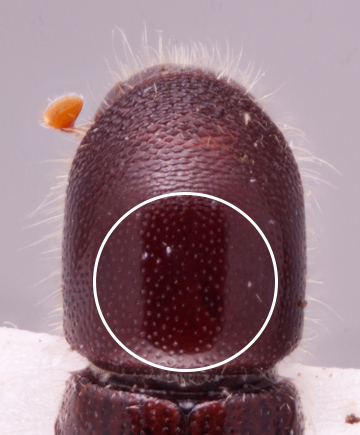 striae, striaestria:
striae, striaestria:
punctures in rows, which may or may not be impressed to make grooves setose, setaeseta:
setose, setaeseta:
small hair-like or scale-like structure
semi-recumbentsemi-recumbent:
pertaining to setae that are in between'erect and recumbent, usually at a 45 degree angle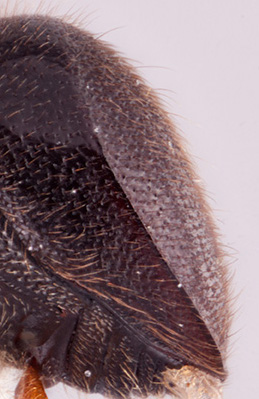 and equal to the width of an interstriainterstria:
and equal to the width of an interstriainterstria:
'longitudinal spaces along the elytra between the striae, which is not as<br />
impressed and bear smaller punctures.
 ; interstriaeinterstria:
; interstriaeinterstria:
'longitudinal spaces along the elytra between the striae, which is not as<br />
impressed and bear smaller punctures.
 denticulate-granulate, uniseriate with erecterect:
denticulate-granulate, uniseriate with erecterect:
'pertaining to setae that have their apices directed away from the body and appear straight
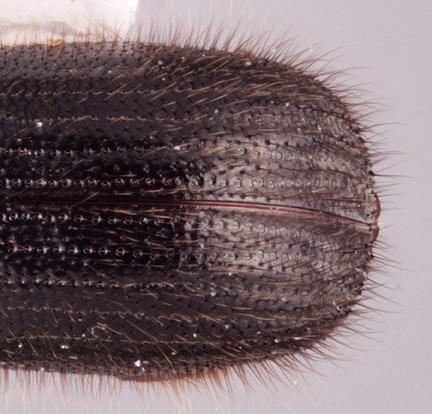 hair-like setaeseta:
hair-like setaeseta:
small hair-like or scale-like structure
longer than the width of two interstriae; pronotumpronotum:
'the dorsal surface of the thorax
as long as wide, from dorsaldorsal:
'of or relating to the upper surface; opposite of ventral
 view rounded (type 1) and laterallateral:
view rounded (type 1) and laterallateral:
'pertaining to the side
 view basic (type 0), summitsummit:
view basic (type 0), summitsummit:
highest point, used for pronotum and elytra, denotes the peak between pronotal frontal slope and disc, and between elytral disc and declivity at midpoint, basalbase:
at midpoint, basalbase:
point or edge closest to the body; opposite of apex half smooth, shiningshining:
half smooth, shiningshining:
appearing glossy or bright in luster; referring to a surface that is polished and reflects light well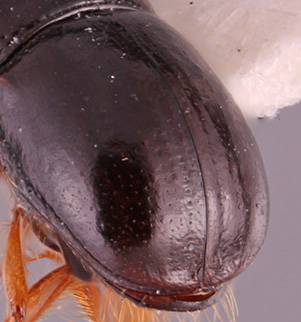 , sparsely minutely punctatepunctate:
, sparsely minutely punctatepunctate:
'set with fine impressed points, appearing as pin pricks
 ; and sparse mycangial tuftmycangial tuft:
; and sparse mycangial tuftmycangial tuft:
'tuft of setae that denotes the mycangia exterior opening
 on the pronotalpronotal:
on the pronotalpronotal:
'pertaining to the pronotum
basebase:
point or edge closest to the body; opposite of apex .
.
May be confused with
Xylosandrus compactus, X. derupteterminatus, X. mesuae, and X. morigerus
Distribution
Vietnam
Host plants
unknown (Smith et al. 2020bSmith et al. 2020b:
Smith SM, Beaver RA, and Cognato AI. 2020b. A monograph of the Xyleborini (Coleoptera, Curculionidae, Scolytinae) of the Indochinese Peninsula (except Malaysia) and China. ZooKeys 983: 1-442. https://doi.org/10.3897/zookeys.983.52630)
Remarks
The gallery of this species is a flat cave and excavatedexcavated:
'with a depression that is not in a segment of a circle
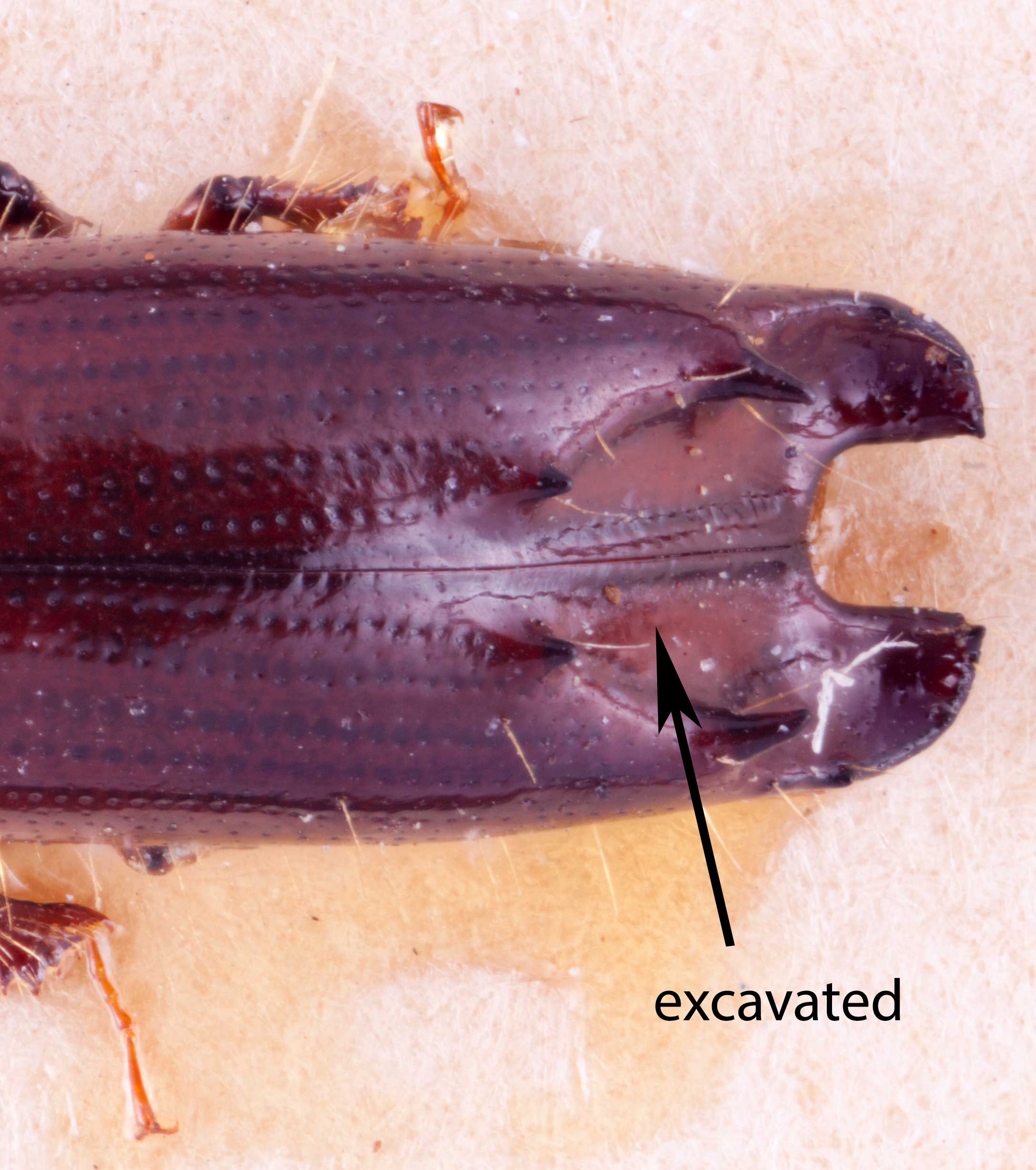 against the grain of the wood (AIC, pers. obs.).
against the grain of the wood (AIC, pers. obs.).
DNA data
Sequences available for COI and CAD.
COI: MN620056
CAD: MN620324

